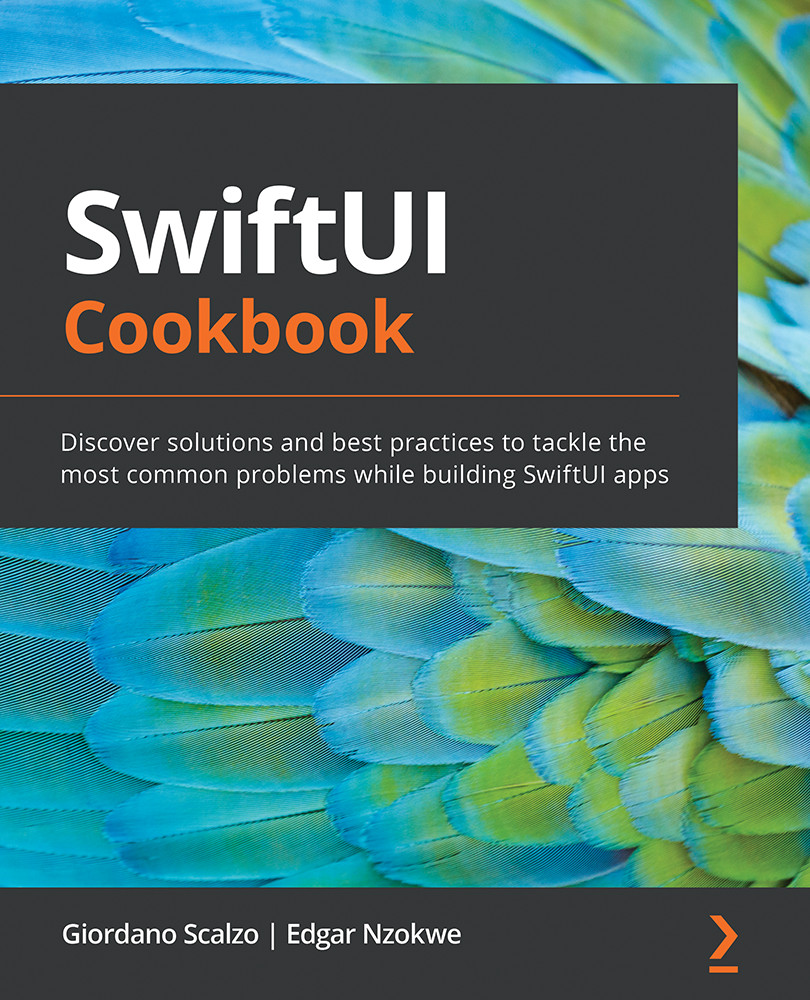-
Book Overview & Buying

-
Table Of Contents

SwiftUI Cookbook
By :

SwiftUI Cookbook
By:
Overview of this book
 Free Chapter
Free Chapter
 Sign In
Start Free Trial
Sign In
Start Free Trial

 Free Chapter
Free Chapter
SwiftUI has introduced not only a new way of describing the UI elements and components but also a new way of implementing animations. In the case of animations, it needs an even more complex change of thinking. Whereas the layout concept is inherently declarative, the animation concept is inherently imperative.
When creating an animation in UIKit, for example, it is normal to describe it as a series of steps: when this happens, do that animation for 1 second, then another animation for 2 seconds.
Animation in the SwiftUI way requires us to define three parts:
A trigger is an event that happens, such as a button click, a slider, a gesture, and so on.
A change of data is a change of an @State variable, such as a Boolean flag.
A change of UI is a change of something that is represented visually following the change of data – for example, a vertical or horizontal offset...
